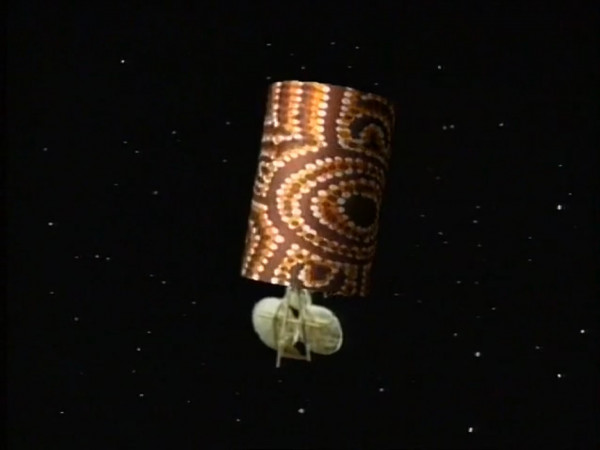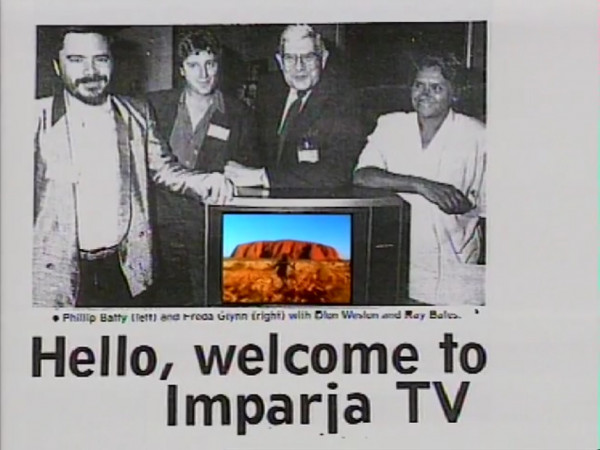
2. The history of CAAMA
[The Gap, Alice Springs]
Director, CAAMA
CAAMA started in 1980, so that we could put radio broadcasts into the local stations. From there it’s been ‘go’ ever since. [see Songlines to Satellites, pp31-13]
[Radio DJ - subtitles] Hello to Hermannsburg, Santa Theresa and Amooonguna, I’m Clara Inkamala. You are listening to CAAMA Radio 8 KIN FM. Soon I’ll put on the song that I tried to play before.
Director, CAAMA
When we first started, there wasn’t any radio programmes especially done by Aboriginal people for Aboriginal people. Historically doing the first thing was having Aboriginal language programmes on a local commercial station for half an hour a week.
[Radio DJ - subtitles] So here is ‘Blek Bala Mujik’ for you.
Director, CAAMA
Throughout Central Australia, Northern Australia and certainly in the Western Desert areas we broadcast, usually people’s first language is an Aboriginal language, and broadcasting in languages sort of overrides the complication of English. It became obvious at a very early stage that people wanted videos, and our first attempt with videos was a magazine once a month. We used to send them out to all the communities and they used to play them to death, until the colours had gone out of them…
Deputy Director, CAAMA
Yeah, the original idea was to basically produce television programming here in Alice Springs, and have it re-broadcast through the local ABC transmitter. The Federal Government announced, before actually CAAMA was in existence, that there would be a national satellite. One of the main motivations was actually to get access to the satellite or utilise the satellite in some way that would be relevant and purposeful to Aboriginal communities in the remote areas of Australia. We had an arrangement with the ABC whereby we would produce a programme here every week, called Urrpeye, and the programme was sent down to Sydney after it was completed, and was actually broadcast from Sydney at about 11.30, 12 at night…But I think they could see that they were opening up a Pandora’s Box: if they allowed CAAMA to continue with this, every other Aboriginal media organisation in the country would want to access ABC TV transmitters. We were only after limited access for radio and television services. Unfortunately, the powers that were at the time in Federal Government didn’t really take much notice of smaller users, including ourselves, so that in the end the only thing we could actually do, was to apply for the full commercial television license that was made available.

